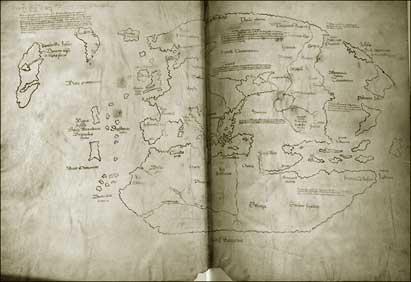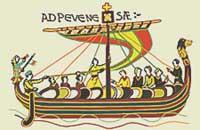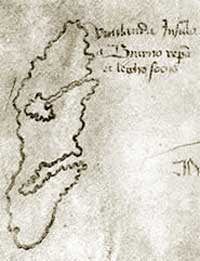Is the map of Vinland real?

According to the latest analyses, the ink of the first map with the American Northeast drawn is not clear. dependent.
The Vikings were fervent explorers. From northern Europe they explored, conquered and colonized many territories. Some of the most famous trips are those made by Erik Gorriak and his son Leif Ericsson to America.
Due to a couple of murders, Erik the Red was exiled from Iceland for three years, period in which he began to explore and soon discovered Greenland. He returned to Iceland and with lies he succeeded people to colonize that land.

Leaving Greenland, Erik the Red's son embarked and headed southwest. On that trip he discovered the coast of Newfoundland and gave it the name of Vinland, because supposedly there the vineyards grew. Over time, the colonies were also built by the Vikings. All these stories were documented when the Vikings left these lands.
Among these documents is the XV. A map of the 20th century is especially famous. In this map is drawn Vinland, discovered by Ericsson, and that is why it is called Vinland map. If that document is real, it would be the first map of America, that is, a very important document for historians, but many experts have claimed that it is false. Now the ink on this map has been analyzed and the debate has reached the laboratory.
Chemical work
The map of Vinland reached great fame in 1957, when Yale University paid a million dollars to achieve it. The theory that the Vikings were in America before Columbus was very novel, but the later excavated deposits have confirmed this idea.

However, in 1974, an investigation proposed that the map was false; scientists found an anatase on the map, a synthetic compound invented in 1923. However, eleven years later, another study questioned the result of the previous one: the anatase has titanium, but the x-ray study found a very small amount of titanium in the ink of the map. The debate was over.
Now, a London group has studied this ink through Raman microscopy. According to scientists, lines XV. They are manufactured imitating a type of ink that was used in the nineteenth century. But this type of ink has a lot of iron and the ink on the map of Vinlada has no traces of iron. On the contrary, it is considered a mixture between coal and anatase.
Latest reviews
These latest results have also been questioned: according to experts, Raman microscopy does not provide enough data to conclude it. They say there is a lot of speculation. On the other hand, no double-dye counterfeiter is known; experts claim that scientists should collaborate with historians.
To fully confuse the debate, another group of researchers has studied the age of parchment using 14 carbon techniques. According to them,
it is 1423-1445, XV. the twentieth century. This data also shows nothing, but it makes it difficult to prove that it is false.
For this thirty year debate there will be no clear explanation for a long time. As technology advances, new arguments will emerge in favor and against. In that, at least, there is no doubt.
Buletina
Bidali zure helbide elektronikoa eta jaso asteroko buletina zure sarrera-ontzian











